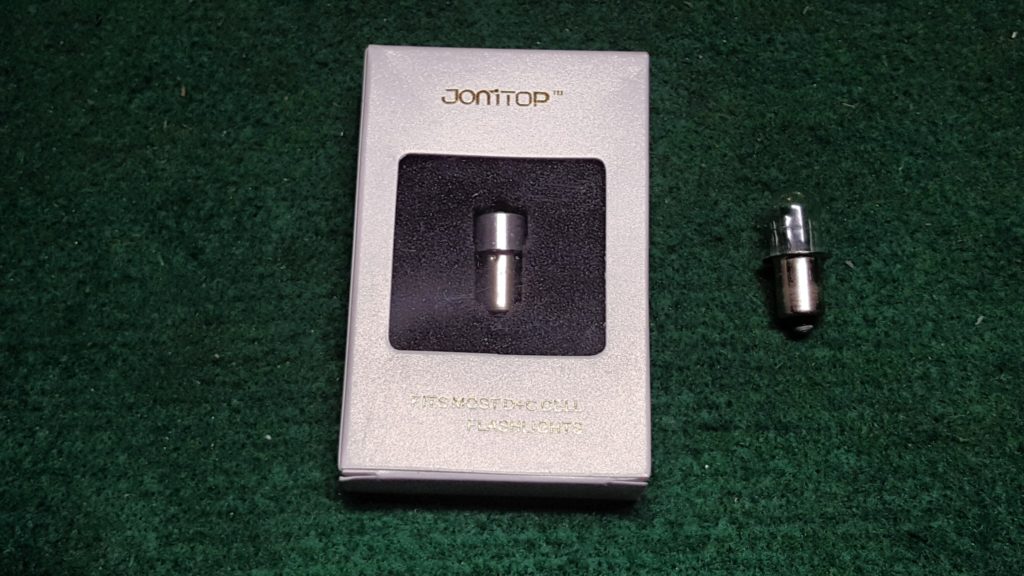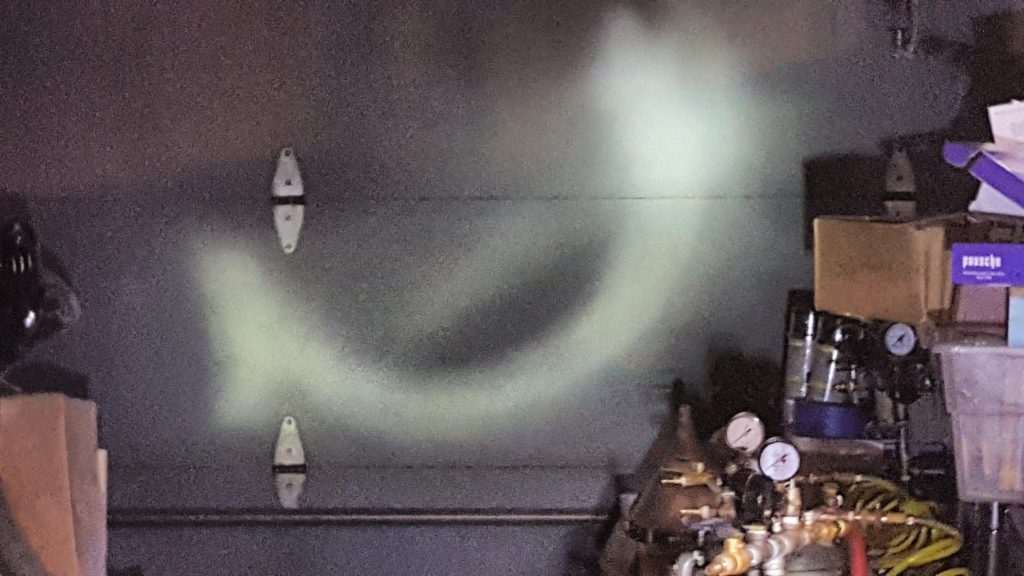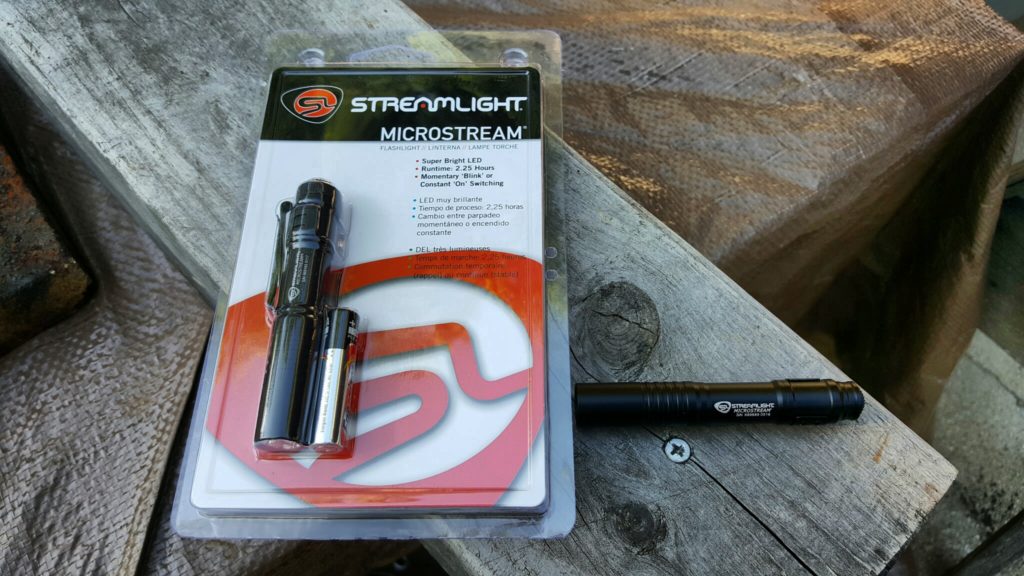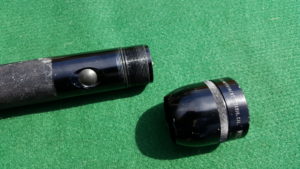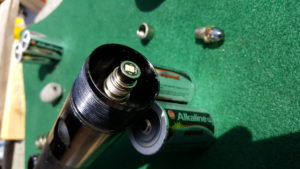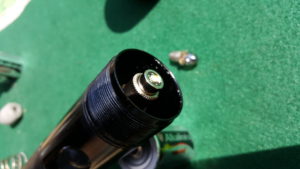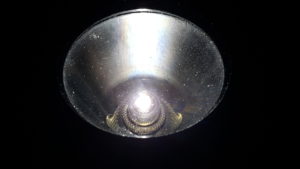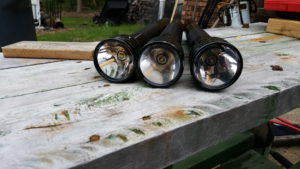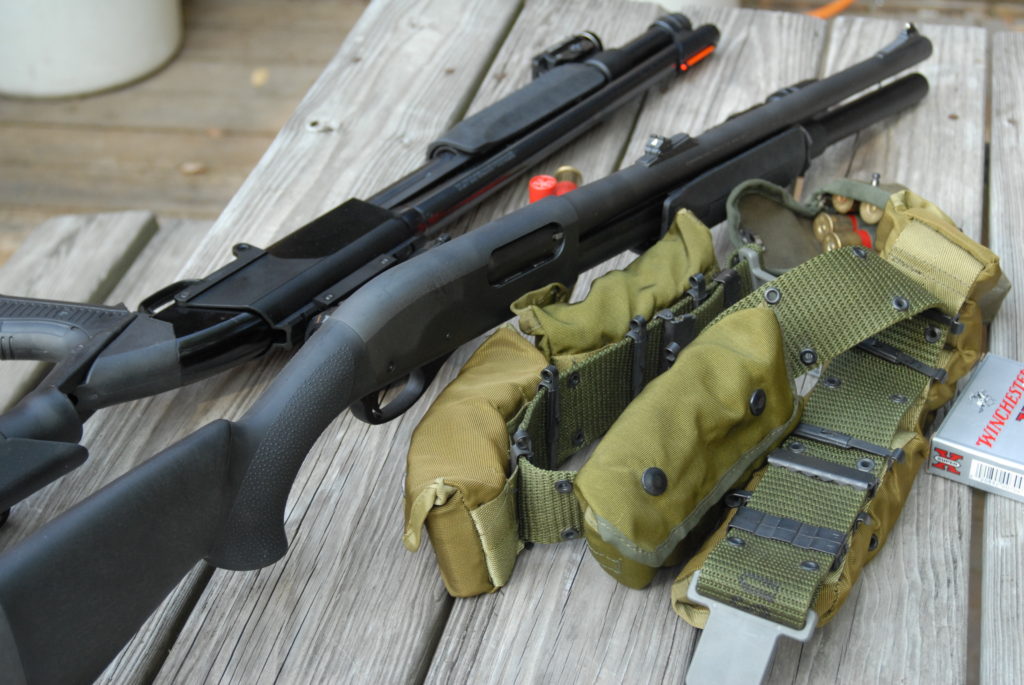Hi folks,
I actually buy what I post about so if something doesn’t work, I’m going to report it. In 2015, I upgraded my three Mag-Lites with TerraLUX TLE-6EX Ministar5 140 Lumen LEDs. Those have worked great – they are bright, durable, and easy on the batteries. A few weeks back, I ran across an Amazon listing for a TerraLUX TLE-310M-EX Ministar31M-EX LED Conversion kit for 4-6 D cell Maglites. Now that kind of excited me – 1,000 claimed lumens plus I had good luck with their bulb replacements so the upgrade kit seemed like a no brainer. Unfortunately, I was not so lucky this time because it did not fit either my four or five D-cell lights.
The conversion kit looks well made and is super easy to install — or at least it should be if it will fit the head of your light:

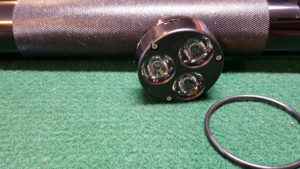


To be fair to TerraLUX, my 4-D cell Mag-Lite dates back to the early- to mid-1980s. My 5-D cell was bought by my dad for his own use shortly there after. The 3-D cell I have was bought by my dad at an unknown time. I just want to point out right up front these are older lights. To get to the point, the TLE-310M only fit the 3-D cell the way it should but it was not recommended for that few of cells plus was not as bright.
My best guess is that Mag-Lite evolved the shape of the flashlight’s heads over the years. My 4-D cell’s head actually is curved inside behind the reflector. The 5-D cell is flat inside. The 3-D is flat inside too but it look like the stem that holds the bulb sticks up further. When I screwed the TLE-301M straight onto the bulb stem, WOW. On my 5-D cell, my Lux meter could not go up that high. The problem is that the kit would not fit with the head on the way it should. I suspect the positive contact on the bottom of the kit could not touch the Mag-Lite’s positive contact.
Here’s the 5-D cell taken apart with the conversion kit. Normally to install the kit, you would just remove the bezel, lens, reflector and bulb. The kit then screws in place of the bulb. I had it all apart trying to figure out what was going on.

At this point I was getting a bit miffed. I did not take a picture of my 4-D cell taken apart but it definitely had a conical shape under the reflector and the kit again would not make contact with the head in place. if I screwed the kit right on to the stem, it was fine but no-go with the head on. Note, they say to turn the head for the kit and positive contact to come together – that did not work on either the four or five cell lights no matter how firmly I turned the head.
Here is my 3-D light. Look at how far the stem is sticking up with the head on! Sure enough the kit installed just fine on that light *but* it had fewer cells than recommended and it negatively impacted the brightness.


Here is the light output measured before (60,500 Lux because the meter is set to the x100 Lux range) and after (119,800 Lux) on the 3-D cell light:
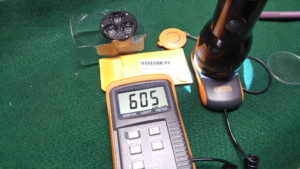

So it did almost double the light out the front but not enough for me to want to spend $50. When I did the test with the 5D cell with just the conversion kit screwed straight onto the stem with no head, the output exceeded the meter’s 200,000 Lux limit. Wow – it was bright. I sure wish it would have fit.
The one plus out of all this is that I did discover my 3-D cell’s light needed a bit of silicone grease on the threads to turn smoother and it had an old plastic lens that I upgraded to clear glass unit from Neutek:
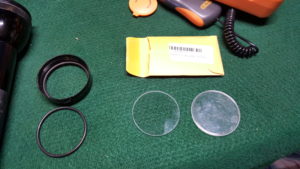
Bottom line, I returned it the conversion kit to Amazon. I feel TerraLux should have known it wouldn’t fit all lights — shouldn’t they? So, if you have an older Maglite (say 1980s or 90s), stick with the single bulb upgrade to LED (the TerraLUX TLE-6EX) and you’ll be a happy camper. If you have a newer Mag-Lite, you may be okay but I do not know that for sure.
If you find this post useful, please either buy something using one of the links to eBay and Amazon or click one of the advertisements. It will help us fund continued development of the blog.
This is the conversion kit you should be cautious about in terms of fitting an older light – the quality looked very good:
The single LED unit listed below is in use in all three of my 80s/90s Mag-Lites and works great. No problems yet of any kind!
7/20/19 Update: The TerraLUX Ministar 5 TLE-6EX-CNC LEDs are still working great in my lights. They have survived multiple winters, bouncing around in vehicles, camping, etc. I’m very happy with them. Definitely upgrade your lens as well with the unit above.
2/19/20 Update: Still no problems.
If you find this post useful, please share the link on Facebook, with your friends, etc. Your support is much appreciated and if you have any feedback, please email me at in**@*********ps.com. Please note that for links to other websites, we are only paid if there is an affiliate program such as Avantlink, Impact, Amazon and eBay and only if you purchase something. If you’d like to directly contribute towards our continued reporting, please visit our funding page.
Like this:
Like Loading...




